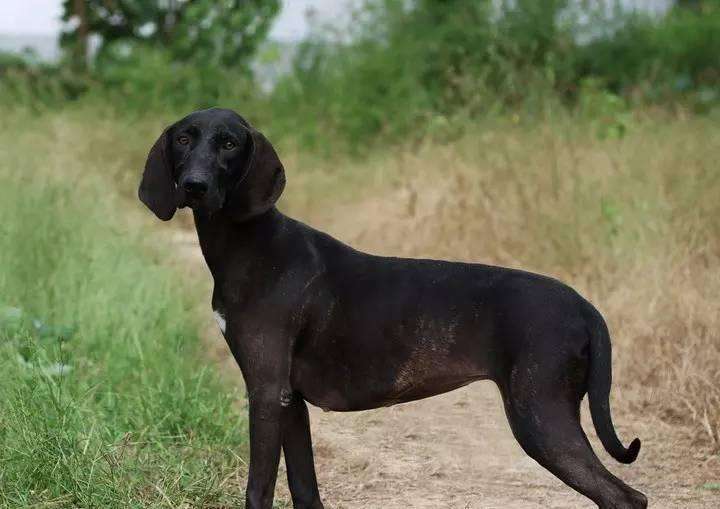Plott Hound
IUCN
LCBasic Information
Scientific classification
- name:Plott Hound
- Scientific Name:
- Outline:Carnivora
- Family:Canidae
Vital signs
- length:105-125cm
- Weight:20-36kg
- lifetime:12-13year
Feature
Plott Hounds need long walks or outdoor activities every day. They love swimming and need weekly brushing.
Distribution and Habitat
Originated from the United States
Appearance
Eyes are brown or hazel, prominent but not deep set. Ears are of moderate length, soft in texture, fairly wide, and set high. Hanging gracefully, with the inner portion turned outward toward the muzzle. When concentrating or curious, some Plott's ears have a semi-erect force, forming a distinct crease at the crown. Skull is moderately flat. Rounded at the crown, with a fairly wide space above the eyes. Muzzle is of moderate length, with the lip somewhat square in appearance. Eye rims, lips, and nose are black. The lip is black. Teeth are scissor-shaped.
Brindle is preferred (stripes of dark hair on a light background). The following brindle colors are included: deer, brown, tan, chocolate, liver, orange. Red, light or dark gray blue or Maltese, light black, black. Other acceptable Plott colors are solid black, any dark brindle, with black saddle, and black with neat markings. Sometimes a rare deer color is seen in young, without markings; colors range from red deer to sandy red
Details
The Plott Hound is a large group hound native to the United States and originated in the 18th century. The Plott Hound is intelligent, alert and confident, with a pronounced hound-like overtone, and was traditionally bred to handle large game.

The Plott Hound is the original coonhound. This large, social dog has been bred by the Plott family for nearly 250 years. They are used for hunting bears and raccoons in the Appalachian Mountains, Blue Ridge Region, and Great Smoky Mountains of the eastern United States. Unlike the loud barks of other coonhounds, the Plott Hound has a strange, high-pitched bark. Their lean bones and strong muscles ensure that they can work day and night. They love to wolf down large amounts of food, which can lead to fatal gastric torsion. This dog is rarely seen outside the southern states of the United States. And they are rarely kept alone as companions.
In 1750, 16-year-old Johannes GeorgPlott bought five detection dogs (Schweisshunds) from Germany and brought them back to his new home in the Great Smoky Mountains. It turns out that these dogs and their descendants are great at hunting big animals, especially bears. In the early 20th century, crosses were made with other dogs to improve the quality of the Plott Hound. This time this breed introduced dogs with black saddle tabby appearance. Although primarily used to hunt bears, boar, and mountain lions, many Plott Hounds are also adept at chasing raccoons up trees. Coon hunters, who far outnumber bear hunters, have found this dog to be too much for their needs. In 1946, the United Kennel Club recognized this breed, so it had its own official name "Plott Hound". In 2007, the AKC recognized the Plott Hound and classified it into the hunting dog group.
Plott Hounds are helpful, loyal and brave, but also willful and independent. They are wary of strangers, but usually become familiar with people quickly. They do not live in groups with other dogs like some hounds. Plott Hounds need long walks or outings every day. They love to swim and need to be brushed weekly.
Protect wild animals and eliminate wild game.
Maintaining ecological balance is everyone’s responsibility!








